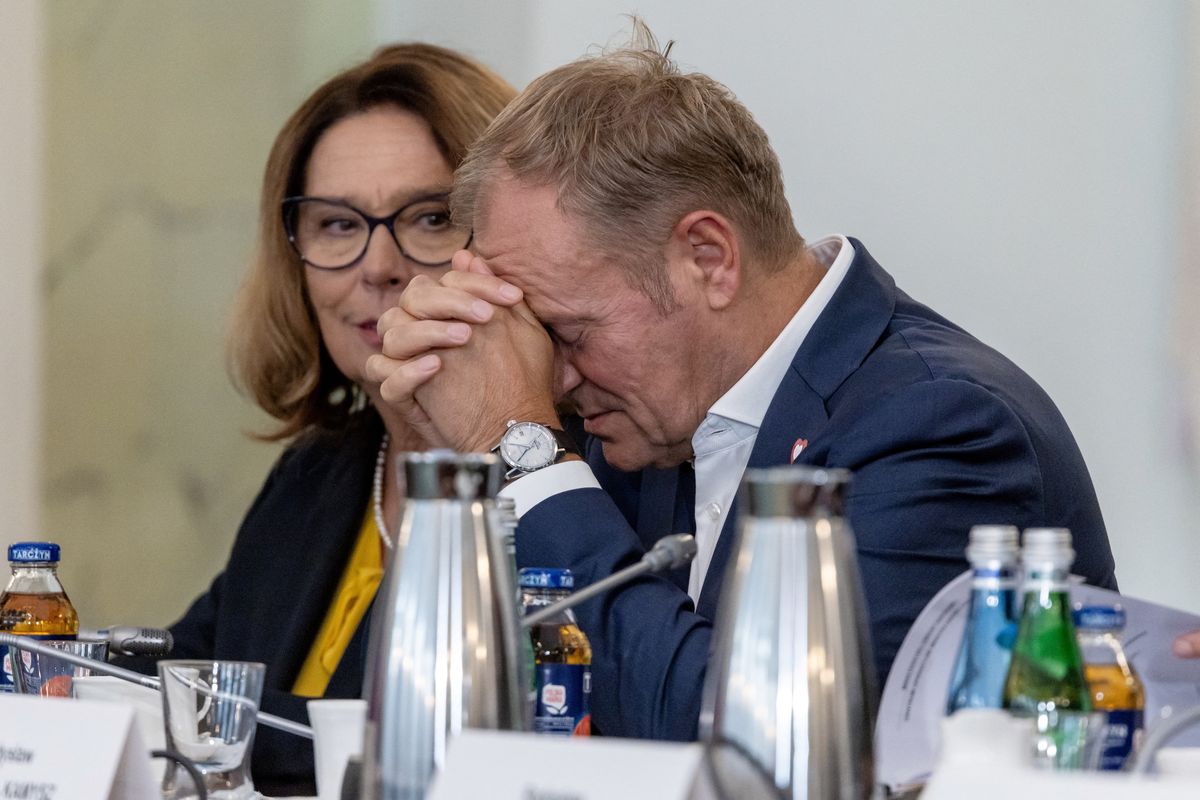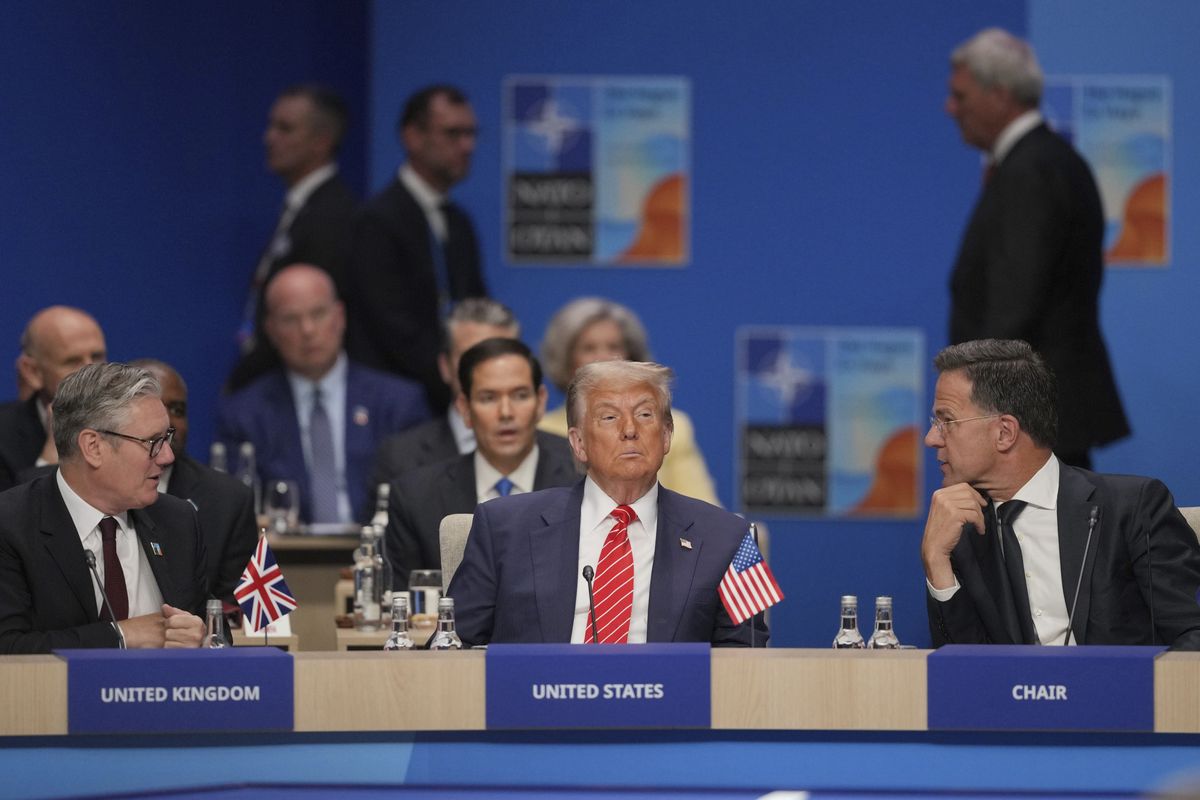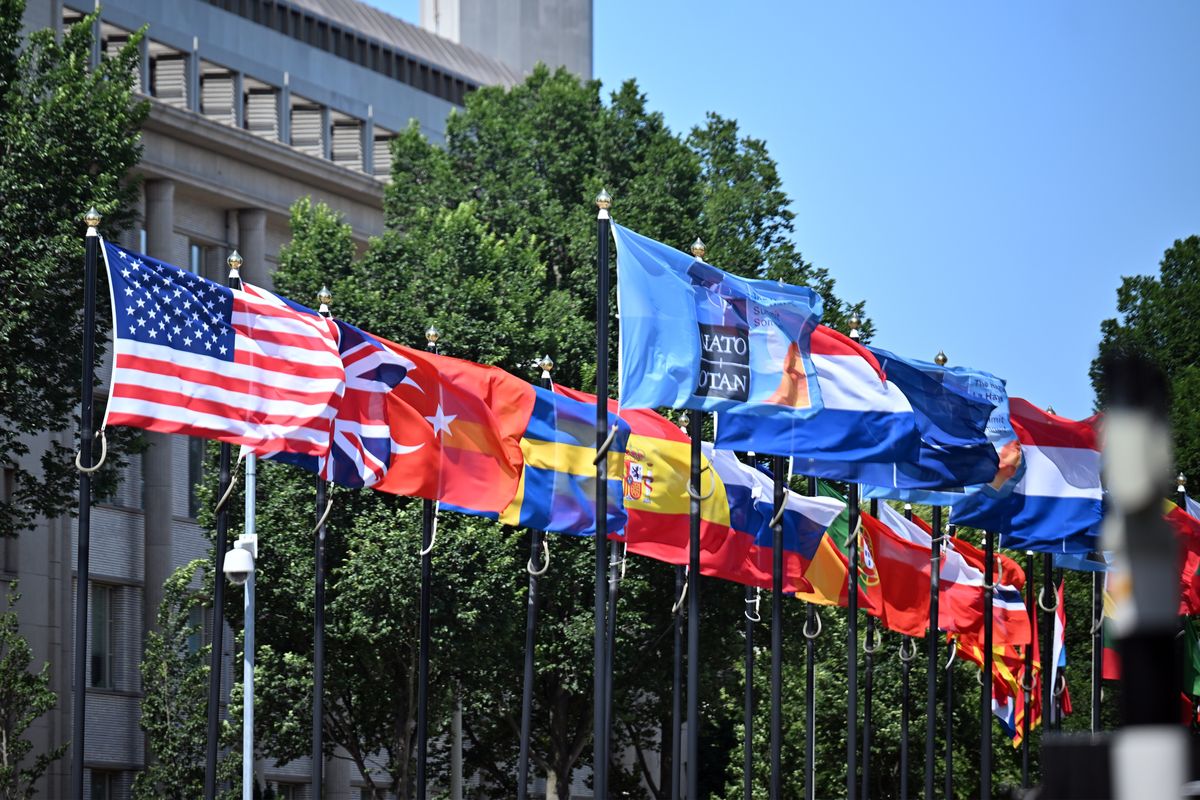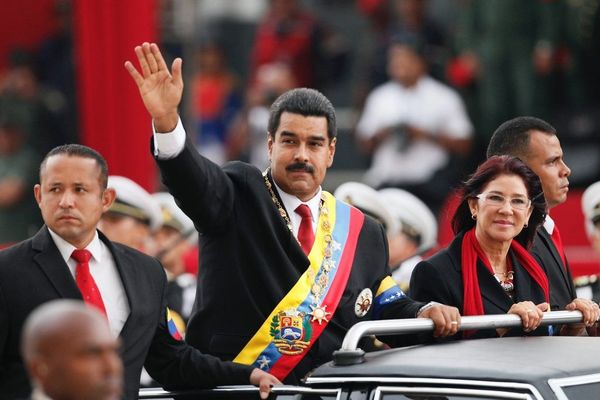President Donald Trump made it abundantly clear at the recent NATO heads of State meeting in Brussels that he wants to see members of the transatlantic alliance boost their military spending. Denmark, the only Nordic country that is a member of both NATO and the European Union, has been a committed ally of the United States, a strong supporter of transatlantic cooperation, and a key partner on defense and security cooperation issues. The Cipher Brief's Mackenzie Weinger sat down with Danish Ambassador to the United States Lars Gert Lose for a wide-ranging chat on NATO, counterterrorism, Arctic issues and cybersecurity
The Cipher Brief: I wanted to start with NATO, since that’s one of the administration’s central focuses. President Trump has criticized NATO allies as not paying enough for defense — is Denmark on its way to increasing its military spending? How significant is this to the U.S.-Denmark relationship?
Amb. Lars Gert Lose: First of all, just to understand Denmark’s position, I think together with the UK, Denmark is probably the most transatlantic country in Europe. NATO is the cornerstone of everything we do on the security side. NATO is extremely important to us. And, of course, like I think all other NATO partners, we follow the debate in the U.S. closely.
Our ministers have said this publicly as well, that if the statements made during the campaign were a reflection of the U.S. pulling back from NATO, that would be a concern for us because they’re such a close partner. But since then, we’ve got a lot of reassurance that NATO will remain a cornerstone in U.S. security policy. Our prime minister was here a few weeks ago and had a meeting with Trump — the number four European country, very proud of that — and they had a very good discussion on NATO where it was clearly confirmed the U.S. will stay 100 percent engaged in the future.
Denmark is also a country that delivers, when you look at NATO. There are two discussions with NATO. One, on the input side, on defense budgets and investments, and then on the output side, what countries actually deliver when we have NATO operations. When you look at the output side, Denmark is in the top two together with the U.S., so everything we have on the military side in Denmark is designed for deployment. For the last almost three decades, Denmark has been in every single military operation that the U.S. has been involved in — we were in Kosovo, in the Balkan countries, in Iraq, and Afghanistan after 9/11 for many, many years, and we’re still in Afghanistan and heavily present there.
Together with the U.S., we’re one of the countries that has had the most casualties in Afghanistan, unfortunately, so we have paid a heavy price for that. We’re back in Iraq and Syria now, per capita one of the countries that delivers most in the fight against ISIS. We’re training Iraqi security forces, we have radar installed, we have special operations forces operating in Iraq but with a mandate to go into Syria as well. We’re going to stay invested.
We’ve fought off the coast of Somalia, we’re heavily involved in the Sahel region and Mali fighting terrorism, the Libya bombing campaign as well, we were one of the first countries to come in there and the last to leave. Everything we have on the military side is designed for deployment, so we do very well.
On the input side, we have an issue, as do many other countries. Our defense budget has been dropping for many years now, but we have a new government coalition, and it’s clearly stated that they want to ensure a substantial increase in defense spending. That was part of the discussion my prime minister had with the president, and Secretary of Defense Jim Mattis was just in Copenhagen, and my foreign minister had a bilateral with Secretary of State Rex Tillerson in Fairbanks, Alaska.
We also do a lot of reassurance and deterrence in Europe, sending battalions to the Baltic countries to deter as well, and we invest a lot in European security. We need to do more of that in the future, because things have changed in Europe. We want to increase our defense spending, so we’re going to turn the tide in Denmark and get there.
TCB: Is there a date or—
Amb. Lose: No, not yet. As we speak, they’re negotiating with the parties in parliament how to construct our defense budget for the next five years. We have to, one, invest in defense, but we also need to be pretty precise in how we’re going to do this. Where are we going to invest in the future? The thing we’re realizing now is we have to do more in the Arctic, for example. That’s a completely different theater, different capabilities you need in the Arctic. So we’re in the process of rethinking how we are going to design our military to also be able to complete the tasks we need to do in the Arctic as well.
TCB: On Danish concerns in the Arctic, what is key in the region? How do you hope to work with the United States in this area? And how do you see Danish priorities in the Arctic fitting in with the U.S.-Russia power struggle there?
Amb. Lose: The Arctic is a very distinct region in terms of security policy. We want to keep the Arctic as a low tension area. We’ve been able to do that. No coastal state in the Arctic has any interest in raising the stakes up there, starting the buildup. Having said that, we see more exercises, we see buildups — not dramatically, but there’s a shift in focus. That’s one thing.
And then, with climate change, things are changing, you see new sea routes opening up and with that come new security challenges. So you have environmental challenges, security challenges — and also more economic activity, which is a good thing. Greenland is part of the Danish Kingdom, and we very much support what the Greenland government in being able to strengthen their economic development and exploring natural resources is a big part of that. But of course, all of this has to be handled in a sustainable manner.
There are some environmental and security risks to this as well — we’ll see more cruise ships, so you have to better at search and rescue. If today you had an accident up there, there would be no one to help people. It’s going to take 48 hours to get anyone up there. That’s a real security challenge that we need to be able to deal with. All of these challenges are massive. And the economic interests are changing as well, because as soon as you can start using the sea routes in the Arctic, it’ll completely change shipping and economic transport, the time you use to transport goods, so we need to be aware of that. A lot of things are opening up there.
TCB: When you mentioned rethinking defense and the military in regards to the Arctic, what did you mean?
Amb. Lose: A couple of examples — we’re in the middle of the process of doing that, but we’re not going to do a military buildup. We’re not going to have battalions stationed in the Arctic, because we want to have it continue to be a low tension area, and there’s no reason to do that. But we need to be better at situational awareness. We’re already discussing that with the U.S., how we can cooperate on that with satellites and drones. There are many opportunities of doing much more in that area.
We need our coast guard to be up there to be able to do search and rescue, to have more helicopters. There are a lot of things we can do without talking hardcore defense buildup, nothing like that, but we need military capabilities up there to be able to do search and rescue, prevent big environmental catastrophes, to have situational awareness much more than we have now.
The fact is that none of the Arctic states — not the U.S., not Canada, not Russia, definitely not Denmark — will be able to take care of the whole region as such. I think there will be some radical changes up there. So this is going to be a number one priority for us in years to come.
TCB: Could you elaborate about the U.S.-Denmark relationship in regards to counterterrorism?
Amb. Lose: First, on the military side, again NATO is the cornerstone. That’s where we do the important stuff, also deterrence in Europe, so the whole cooperation with the U.S. around that is extremely important to us. And, again, going back to the defense budget, it is unsustainable that the U.S. pays 70 percent of the bill. We need to step up in Europe, I’m completely behind that. So that’s important. The fight against ISIS, in Iraq and Syria, we’ll stay committed and keep on delivering whenever there’s a need, as we’ve done in the past. That is a number one priority for the U.S., to do our share in the fight against ISIS. That will continue.
I’d also like to stress Afghanistan. We were one of the countries that went in first together with the U.S., and we’ve invested massively in Afghanistan in terms of causalities, but also Afghanistan is the biggest recipient of Danish development aid. We still have a military presence there. We did a lot of work in the Helmand Province, tough work, for many, many years. So we want to stay engaged in Afghanistan. The worst thing that could happen is if we leave Afghanistan and it plunges back into chaos and becomes a safe haven for terrorists in the future as well.
So that’s going to be very important, together with the campaign to defeat ISIS and all the things we do in Europe, taking into account the Russian aggression in Ukraine and Crimea.
TCB: I also wanted to cover what will likely be an increasingly important issue this year given the facts changing on the ground with the returning foreign fighter problem. It’s often talked about abstractly in the U.S. because we don’t have the same immediate, pressing issues with it as Europe does, so I was hoping you could shed some light on what Denmark has been doing.
Amb. Lose: Foreign fighters used to be a big problem in Denmark. A couple of years ago we had, relatively speaking, a lot of foreign fighters. But we’ve done a lot of work trying to control that. Because clearly this is a massive security problem. And we’ve been doing very well, the numbers have gone down radically during the last couple of years. We’re nowhere near where we were five years ago in Denmark.
There’s different things that we’ve done. Part of it is an anti-radicalization effort, the Aarhus model, using the local communities to de-radicalize people, creating exit programs for people who have been radicalized, working very closely with imams and the religious communities, and local authorities to get to the young people before they are radicalized or help them out of radicalization. That’s a big part of the puzzle. We also come down on people, foreign fighters. You can lose your Danish passport if you’ve fought in Syria or Iraq, and we’re definitely looking into how we can prosecute people who have been foreign fighters much more than we’ve done in the past.
We also have extremely close cooperation with the U.S., on the intelligence side, which is important to this aspect of dealing with foreign fighters, as well as with other countries. We are able to prosecute these people when they come back.
The numbers have gone down dramatically, and Europe as such has done a lot to deal with foreign fighter issues. But it’s something we have to be very aware of, because when we’ve dealt with Mosul and Raqqa, especially, they’ll be a lot of people who will be on the run, as well as foreign fighters. When you look at the numbers in Iraq and Syria, the number of foreign fighters engaged there is a lot smaller than it was in the past, so it’s not the same kind of problem, but we have to be able to deal with those people, hopefully very soon, as we take both Mosul and Raqqa.
TCB: We’ve touched on Russia a little bit, but obviously this is one of the big issues in the U.S. — Russian interference in the 2016 election — and I know the Danish government has said there was hacking linked to the Kremlin that breached email accounts and servers at both the Defense and Foreign ministries in 2015 and 2016. The Defense Minister in April called it “part of a continuing war from the Russian side in this field, where we are seeing a very aggressive Russia.” What did Denmark learn from its experience?
Amb. Lose: We had this massive hacking attack and the Danish government chose to be very clear about that, call out the Russians. They wouldn’t do this unless they were pretty sure this was actually the case. It has been denied by Russia. And we’ve had incidents in the past as well. Clearly, this is an increasingly challenging area. I was a national security advisor before I came here and one of the biggest priorities for us was building up our defense capabilities in the cyber area.
We established a couple of years ago a separate entity, a center closely connected to the Intelligence Community and the Ministry of Justice. They’re dealing with this. First priority, of course, protecting public authorities in Denmark, the ministries, municipalities, looking at how we can protect the energy sector, for example, the financial markets, etc. But then of course, also counseling private companies who are under attack because that is a massive problem.
One of the more colorful initiatives, which I think is really neat, is it’s really difficult to get the people with the talent, the capability, and the know-how to deal with this, so we started last year a hacking academy within the defense intelligence community. We had the first class come out a couple of months ago, and that’ll continue.
TCB: In terms of refugee policies, what can the Danish experience shed light on for the U.S.?
Amb. Lose: We’re going to invest massively in the stabilization part of Iraq and Syria, to win the peace after—we learned that the hard way in Afghanistan and Libya, and we have a dialogue with the U.S. on how we’re going to deal with that afterwards. Because this is also linked to the migration flows, which is a massive security challenge. Take Denmark as an example. In 2015, we had 21,000 asylum seekers, which, translated to the U.S. would correspond to 1.3 million people. You have to remember Denmark is a bit smaller than Maryland as a country. We’re doing much better today than we were in 2015, when people just poured over the Danish border and before we had the border controls and checks.
Here in the U.S., you have a vetting process between 18 and 24 months before you let people in as refugees. In Europe, it starts when the people are actually in the country, and that’s a massive change. For that reason, we’re very interested in stabilizing Iraq and Syria so that people actually have a possibility to do what they prefer to do, which is stay in their countries or go back. That’s a big part of it.













